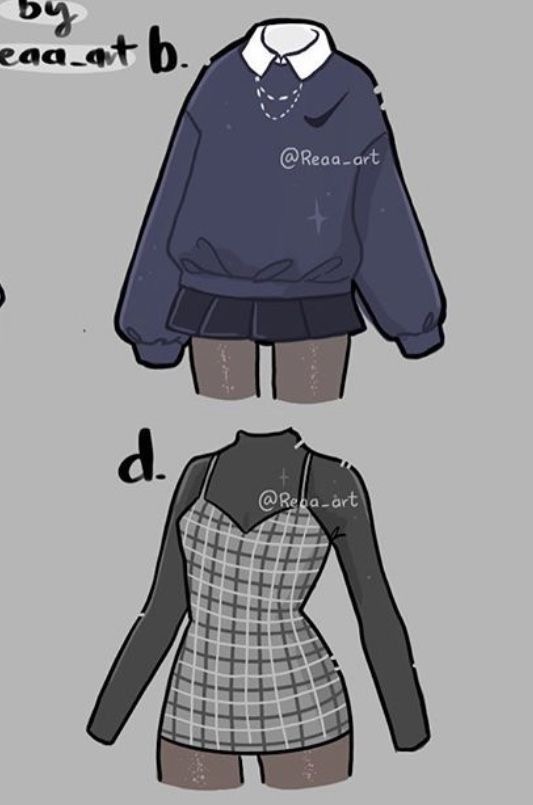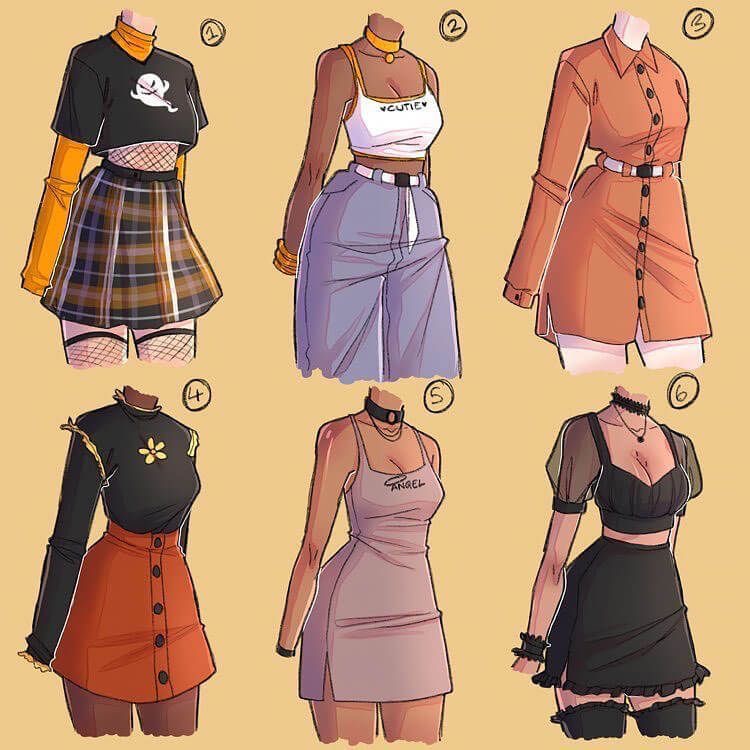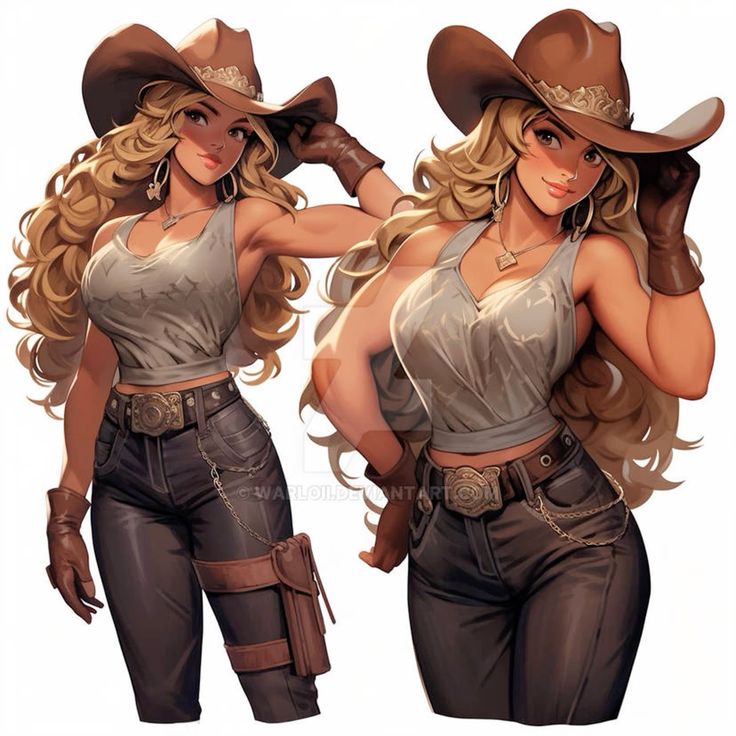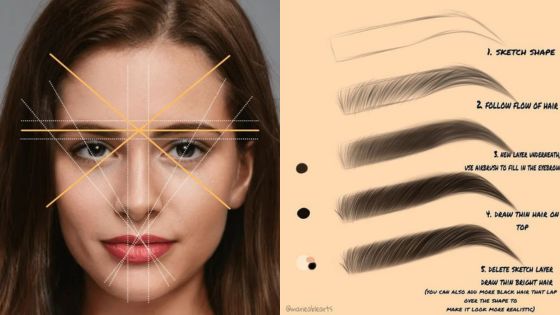Drawing clothes is an essential skill for any artist who wants to create realistic and engaging characters. Whether you’re drawing a fashion illustration or a character for a comic book, understanding how to draw clothes is crucial to making your artwork stand out. However, mastering this skill takes time and experience, and it can be challenging to know where to start.


To begin, it’s essential to understand the basics of clothing, such as how fabric drapes and folds, and how clothing fits the body. Once you have a solid foundation, you can start exploring different types of clothes, from t-shirts to dresses to suits. You’ll also want to learn how to capture movement and drapery, which can add a sense of realism and dynamism to your artwork.
Key Takeaways
- Understanding the basics of clothing is crucial to drawing realistic and engaging characters.
- Mastering clothing textures and details, capturing movement and drapery, and drawing different types of clothes are all essential skills for any artist.
- Techniques for different art mediums and step-by-step clothing drawing tutorials can help improve your clothing drawing skills.
Understanding the Basics of Clothing

When it comes to drawing clothes, there are a few basic concepts that every artist should understand. In this section, we will explore the role of fabric in drawing clothes, the importance of basic shapes and forms, and the significance of anatomy and proportions.
The Role of Fabric in Drawing Clothes


The type of fabric used in clothing plays a significant role in how it drapes and falls on the body. Understanding the properties of different fabrics can help an artist to draw clothing more realistically. For example, a stiff fabric like denim will create more defined folds and wrinkles, while a soft and flowy fabric like silk will create more subtle and fluid movements.
Basic Shapes and Forms


Drawing clothing starts with understanding the basic shapes and forms that make up the human body. By using simple shapes like circles, triangles, and rectangles, an artist can create a framework to build upon. From there, they can add more detail and complexity to create a more realistic and dynamic garment.
Anatomy and Proportions


Finally, understanding the anatomy and proportions of the human body is essential for drawing clothing that looks natural and believable. Paying attention to the tension and movement of the body can help an artist to create folds and wrinkles that look realistic.


For example, when a person raises their arm, the fabric in the armpit will bunch up and create folds. By understanding how the body moves and how fabric reacts to that movement, an artist can create clothing that looks like it belongs on the body.
Mastering Clothing Textures and Details

When it comes to drawing clothes, mastering the textures and details is crucial to create a realistic and convincing appearance. Here are some tips and techniques to help you master clothing textures and details:
Creating Realistic Texture
To create realistic texture, it’s essential to pay attention to the small details such as wrinkles, folds, and creases. These details give the clothes a sense of depth and dimension, making them look more realistic. One way to create wrinkles is to use shading techniques such as cross-hatching or stippling. Another way is to use reference images and observation to capture the unique qualities of different fabrics.


It’s also important to consider the highlights and shadows when creating texture. The highlights are the areas where the light hits the fabric, while the shadows are the areas where the light doesn’t reach. By adding highlights and shadows, you can create the illusion of depth and texture. For digital artists or fashion designers, using an AI Clothes Changer can help visualize how different garments, fabrics, and styles appear on the body before drawing them, providing a useful tool for planning and reference.
For example, if you’re drawing a shirt, you might want to add highlights to the collar and cuffs, and shadows to the folds and creases.
Adding Details to Enhance Realism
Adding details is another way to enhance the realism of your clothing drawings. Details such as buttons, zippers, and seams can make a big difference in the overall appearance of the clothes. To draw buttons and zippers, you can use circles and lines to create the shape and then add shading to create the illusion of depth. Seams can be drawn using a thin line to represent the stitching.
Another way to add details is to consider the fabric patterns. Different fabrics have different patterns, such as stripes, dots, or plaid. By adding these patterns to your drawings, you can create a more realistic appearance. You can also add texture to the fabric patterns by using shading techniques or by drawing the patterns with a textured pen or pencil.
In summary, mastering clothing textures and details is an essential skill for any artist who wants to create realistic and convincing clothing drawings. By paying attention to the small details such as wrinkles, highlights, and shadows, and by adding details such as buttons and fabric patterns, you can create drawings that look like they’re ready to be worn.
Drawing Different Types of Clothes

Drawing clothes can be a challenging task, but with the right techniques, it can be an enjoyable experience. In this section, we will explore the different types of clothes that an artist can draw, including pants, sweaters, shirts, skirts, dresses, and sarees.
Shirts and Sweaters
Shirts and sweaters are some of the most common types of clothing that people wear. When drawing a shirt or a sweater, it is essential to pay attention to the details, such as the collar, buttons, and sleeves. The collar can be drawn using a curved line, and the buttons can be represented as small circles or squares. For a sweater, an artist can use shading to create the texture of the fabric, such as the knit pattern.
Pants and Skirts
Pants and skirts are another type of clothing that an artist can draw. When drawing pants, it is important to pay attention to the shape of the legs, the pockets, and the waistband. An artist can use shading to create the folds and creases of the fabric. For a skirt, an artist can draw the waistband and use curved lines to create the shape of the skirt. The length of the skirt can vary, from a mini skirt to a maxi skirt.
Dresses and Sarees
Dresses and sarees are some of the most elegant types of clothing that an artist can draw. When drawing a dress, an artist can use different shapes and lines to create the silhouette of the dress. The neckline, sleeves, and hemline can also be drawn using different shapes and lines. For a saree, an artist can draw the pleats and the pallu, which is the part of the saree that drapes over the shoulder. The saree can be drawn using different colors and patterns to create a unique design.
In conclusion, drawing clothes requires attention to detail and patience. By using the right techniques, an artist can create realistic and beautiful drawings of different types of clothes.
Capturing Movement and Drapery

When it comes to drawing clothes, capturing movement and drapery is crucial for creating realistic and dynamic designs. Understanding how fabric behaves and moves is essential for creating believable clothing designs. This section will cover two important aspects of drawing clothes: understanding drapery and folds, and conveying movement in fabric.
Understanding Drapery and Folds


Drapery and folds are essential elements of clothing design. They help to create a sense of movement and flow in a design, and can also convey important information about the character wearing the clothes. When drawing drapery and folds, it is important to understand the different types of folds that can occur in fabric.


One type of fold is the pipe fold, which occurs when fabric is compressed and creates a sharp, angular fold. Another type of fold is the diaper fold, which is created when two adjacent pipe folds are compressed together. By understanding these different types of folds, an artist can create more realistic and dynamic clothing designs.
Conveying Movement in Fabric
Conveying movement in fabric is essential for creating dynamic clothing designs. When drawing fabric in motion, it is important to consider the direction and speed of the movement. For example, if a character is running, the fabric of their clothing will be pulled back by the wind and create a sense of motion.
To convey movement in fabric, an artist can use a variety of techniques, such as using curved lines to show the direction of the movement, or creating overlapping folds to show the flow of the fabric. Additionally, an artist can use shading and highlights to create depth and dimension in the fabric.
By understanding drapery and folds, and how to convey movement in fabric, an artist can create more dynamic and realistic clothing designs.
Specialized Clothing Illustrations
Fashion Illustration
Fashion illustration is a specialized form of drawing that involves creating sketches of clothing designs. These sketches are used by fashion designers to communicate their ideas to clients, manufacturers, and other designers. Fashion illustrations can be created using a variety of media, including pencils, markers, and digital tools.


One of the key features of fashion illustration is the ability to capture the details of the clothing design, such as the texture and color of the fabric. This is important because it allows designers to convey their vision for the garment to others. For example, a designer might use a layered or pleated skirt in their design, and a detailed fashion illustration can help to convey the look and feel of the garment.
Drawing Clothes in Motion
Drawing clothes in motion is another specialized form of illustration that is used to create dynamic and engaging fashion designs. This involves creating sketches of clothing that show how they move and flow as a person walks, runs, or dances. This can be particularly useful for designers who are creating sportswear or other types of clothing that need to be functional as well as fashionable.


One of the challenges of drawing clothes in motion is capturing the movement of the fabric. For example, a pair of ripped jeans might move differently than a pair of tailored pants, and a skilled illustrator will need to be able to convey this in their drawings. This can be done using a variety of techniques, such as shading and highlighting, to create the illusion of movement and texture.
Overall, specialized clothing illustrations are an important tool for fashion designers and illustrators. By mastering the techniques of fashion illustration and drawing clothes in motion, designers can create stunning and dynamic fashion designs that capture the imagination of their clients and audiences alike.
Techniques for Different Art Mediums

When it comes to drawing clothes, artists have a variety of mediums to choose from. Each medium has its own unique characteristics and techniques that can be used to create different effects. In this section, we will explore some of the techniques for two popular art mediums: colored pencils and digital drawing.
Working with Colored Pencils
Colored pencils are a popular medium for drawing clothes because they allow for precise control over color and shading. When working with colored pencils, artists should consider the following techniques:


- Layering: building up layers of color to create depth and texture
- Burnishing: applying heavy pressure to create a smooth, polished look
- Blending: using a blending tool or solvent to create a smooth transition between colors
- Hatching and cross-hatching: creating texture and shading by drawing lines in different directions
Artists should also experiment with different types of colored pencils, such as oil-based or wax-based, to see which works best for their style and desired effect.
Digital Drawing Techniques


Digital drawing has become increasingly popular in recent years, offering artists a wide range of tools and techniques for drawing clothes. Some popular digital drawing programs include Adobe Photoshop, Procreate, and Clip Studio Paint. When working with digital drawing tools, artists should consider the following techniques:
- Layering: using different layers to separate different elements of the drawing and create depth
- Brush selection: choosing the right brush for the desired effect, such as a textured brush for creating fabric texture
- Blending: using digital blending tools to create a smooth transition between colors
- Selection tools: using selection tools to isolate specific areas of the drawing for editing or shading
Artists should also experiment with different digital drawing tablets and styluses to find the ones that work best for their style and budget.
In conclusion, whether working with colored pencils or digital drawing tools, there are a variety of techniques that artists can use to create stunning drawings of clothes. By experimenting with different mediums and techniques, artists can find the ones that work best for their desired effect.
Step-by-Step Clothing Drawing Tutorials


Drawing clothes can be challenging, but with step-by-step tutorials and practice, anyone can learn to draw them. In this section, we will cover two types of clothing: a basic shirt and a detailed dress.
Drawing a Basic Shirt


To draw a basic shirt, start by drawing a rectangle for the torso. Then, draw two smaller rectangles for the sleeves. Next, draw a curved line connecting the sleeves to the torso for the shoulders. Draw another curved line for the neckline. Finally, add details such as buttons or a pocket.
A step-by-step tutorial for drawing a basic shirt can be found here. This tutorial includes a drawing demo with clear instructions and illustrations to follow along with.
Creating a Detailed Dress
To create a detailed dress, start by drawing the torso and skirt separately. Draw a rectangle for the torso and a trapezoid for the skirt. Next, connect the two shapes with a curved line for the waist. Draw the neckline and sleeves, if any. Then, add details such as pleats, ruffles, or a belt.


A step-by-step tutorial for creating a detailed dress can be found here. This tutorial includes clear instructions and illustrations for drawing different types of dresses, such as a sheath dress or a maxi dress.
By following these step-by-step tutorials, anyone can learn to draw clothes. With practice, one can become proficient in drawing various types of clothing.
Styling and Accessories


When it comes to drawing clothes, it’s important not to forget about the accessories that can really complete an outfit. In this section, we’ll cover how to draw some of the most common accessories and how to incorporate them into your fashion sketches.
Drawing Caps and Hats


Caps and hats are a great way to add some personality to an outfit. When drawing a cap or hat, it’s important to pay attention to the brim and the shape of the hat. For example, a baseball cap has a curved brim, while a chef’s hat has a tall, cylindrical shape. To draw a cap or hat, start by drawing the basic shape of the head, then add the brim or top of the hat on top.
Adding Accessories to Outfits
Accessories can really make an outfit pop. When adding accessories to your fashion sketches, it’s important to keep in mind the overall style and color scheme of the outfit. For example, a statement necklace can add some sparkle to a simple dress, while a scarf can add a pop of color to a neutral outfit.
Some common accessories to consider when drawing clothes include:
- Jewelry: necklaces, earrings, bracelets, rings, etc.
- Bags: purses, backpacks, clutches, etc.
- Shoes: high heels, flats, boots, sneakers, etc.
Remember, accessories should complement the outfit, not overpower it. When in doubt, less is often more.
In conclusion, when it comes to drawing clothes, don’t forget about the accessories. Caps and hats can add some personality to an outfit, while jewelry, bags, and shoes can really make an outfit pop. Keep the overall style and color scheme in mind when adding accessories, and remember that less is often more.
Drawing Clothes for Different Genres

When it comes to drawing clothes for different genres, there are a few things to keep in mind. The style of clothing can vary greatly depending on the genre, and it’s important to pay attention to the details that make each genre unique. In this section, we’ll explore two popular genres and provide some tips for drawing clothes that fit each style.
Anime and Manga Clothing
Anime and manga characters are known for their unique and often exaggerated clothing styles. These styles can range from school uniforms to elaborate fantasy outfits. One tip for drawing anime and manga clothing is to pay attention to the details. This can include things like the way the fabric drapes, the type of buttons or zippers used, and the way the clothing fits the character’s body.


Another tip for drawing anime and manga clothing is to pay attention to the character’s personality and backstory. The clothing should reflect the character’s personality and the world they inhabit. For example, a character living in a post-apocalyptic world might wear torn and tattered clothing, while a character attending a prestigious school might wear a crisp and clean uniform.
Western-Style Outfits
Western-style outfits are another popular genre for drawing clothes. These styles can range from casual everyday wear to formal attire. One tip for drawing western-style outfits is to pay attention to the details of the clothing. This can include things like the type of fabric used, the way the clothing is tailored, and the accessories that are worn with the outfit.


Another tip for drawing western-style outfits is to pay attention to the time period and setting of the story. The clothing should reflect the time period and the world the character inhabits. For example, a character living in the Wild West might wear a cowboy hat and boots, while a character living in modern-day New York City might wear a trendy outfit with sneakers.
In conclusion, drawing clothes for different genres requires attention to detail and an understanding of the character’s personality and backstory. By following these tips, you can create clothing that fits the genre and helps bring your characters to life.
Improving Your Clothing Drawing Skills

Drawing clothing can be a daunting task for many artists, but with practice and dedication, it can become second nature. Here are some tips to improve your clothing drawing skills.
Practicing Regularly
The key to improving any skill is to practice regularly. Set aside a specific time each day or week to focus on drawing clothing. Start with simple designs and work your way up to more complex pieces. This will help you build a solid foundation and improve your skills over time.
Consider using reference materials, such as fashion magazines or online resources, to help you get started. Pay close attention to the details of the clothing, such as the folds, texture, and overall shape. This will help you create more realistic and accurate drawings.
Tracking Progress and Setting Goals
Tracking your progress is essential to improving your clothing drawing skills. Keep a notebook or sketchbook to document your progress over time. This will help you identify areas where you need to improve and set goals for yourself.
Set achievable goals for each drawing session, such as focusing on a specific aspect of clothing, such as folds or texture. This will help you stay motivated and make progress towards your overall goal of becoming a better clothing artist.
By practicing regularly and tracking your progress, you can improve your clothing drawing skills over time. Remember to be patient and take your time. With dedication and hard work, you can become a skilled clothing artist.
- 8.6Kshares
- Facebook0
- Pinterest8.6K
- Twitter1
- Reddit0


